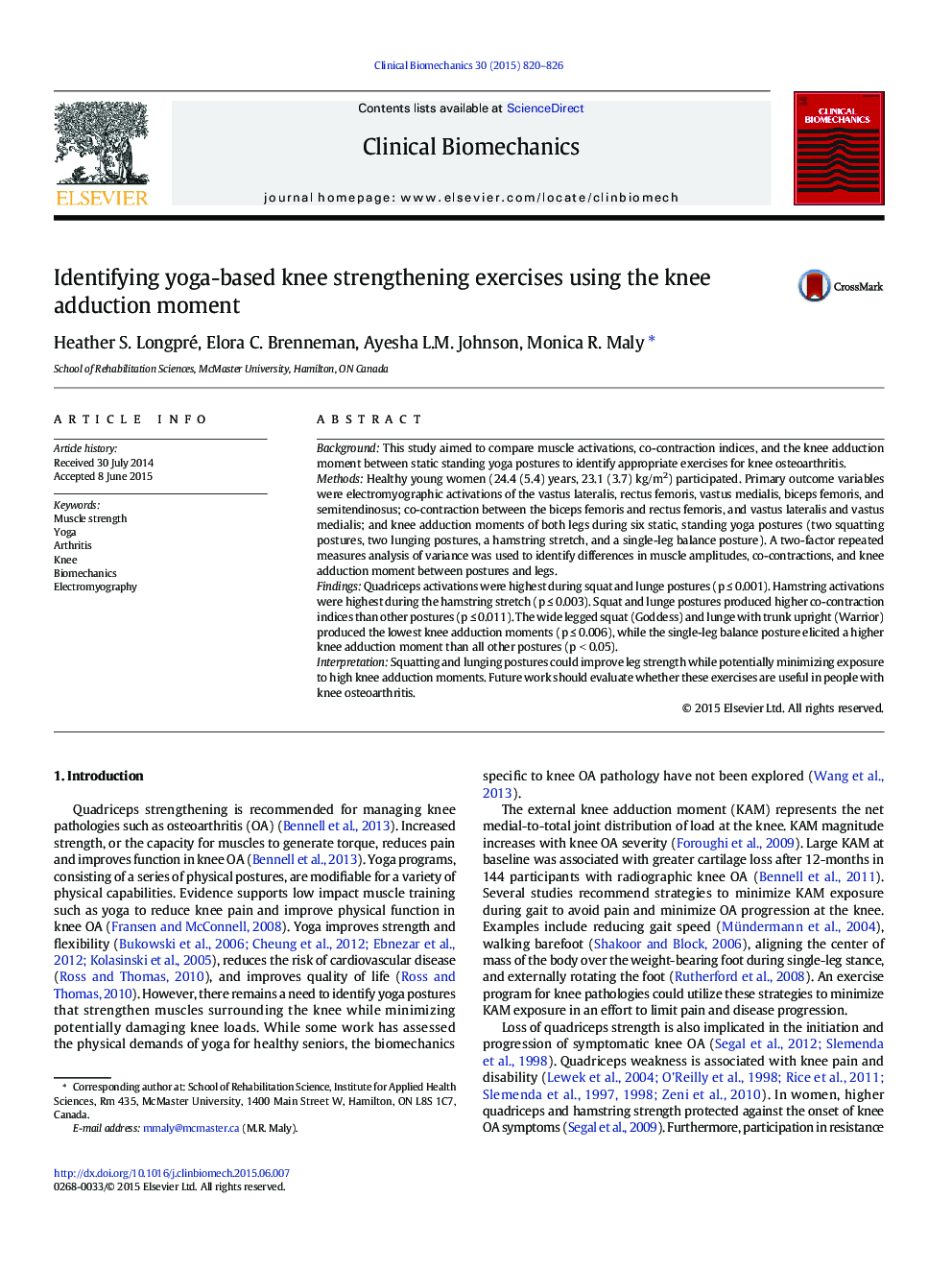| کد مقاله | کد نشریه | سال انتشار | مقاله انگلیسی | نسخه تمام متن |
|---|---|---|---|---|
| 6204686 | 1264910 | 2015 | 7 صفحه PDF | دانلود رایگان |
- Squats and lunges require large quadriceps activations with minimal knee adduction moments.
- Single-leg balance exercises produce greater medial relative to lateral knee loading.
- Squats and lunges require greater lateral/medial co-contraction than other yoga postures.
BackgroundThis study aimed to compare muscle activations, co-contraction indices, and the knee adduction moment between static standing yoga postures to identify appropriate exercises for knee osteoarthritis.MethodsHealthy young women (24.4 (5.4) years, 23.1 (3.7) kg/m2) participated. Primary outcome variables were electromyographic activations of the vastus lateralis, rectus femoris, vastus medialis, biceps femoris, and semitendinosus; co-contraction between the biceps femoris and rectus femoris, and vastus lateralis and vastus medialis; and knee adduction moments of both legs during six static, standing yoga postures (two squatting postures, two lunging postures, a hamstring stretch, and a single-leg balance posture). A two-factor repeated measures analysis of variance was used to identify differences in muscle amplitudes, co-contractions, and knee adduction moment between postures and legs.FindingsQuadriceps activations were highest during squat and lunge postures (p â¤Â 0.001). Hamstring activations were highest during the hamstring stretch (p â¤Â 0.003). Squat and lunge postures produced higher co-contraction indices than other postures (p â¤Â 0.011). The wide legged squat (Goddess) and lunge with trunk upright (Warrior) produced the lowest knee adduction moments (p â¤Â 0.006), while the single-leg balance posture elicited a higher knee adduction moment than all other postures (p < 0.05).InterpretationSquatting and lunging postures could improve leg strength while potentially minimizing exposure to high knee adduction moments. Future work should evaluate whether these exercises are useful in people with knee osteoarthritis.
Journal: Clinical Biomechanics - Volume 30, Issue 8, October 2015, Pages 820-826
